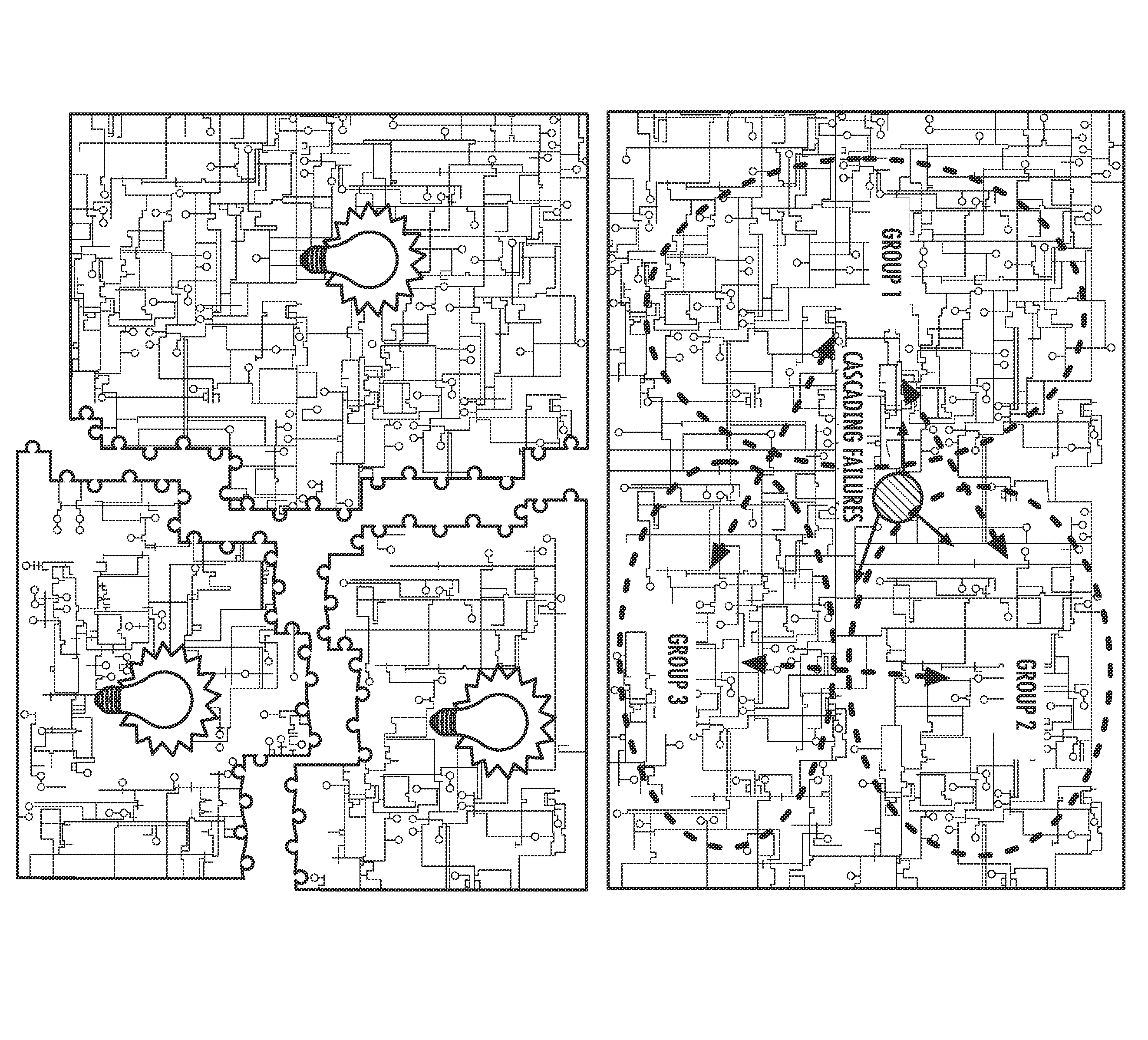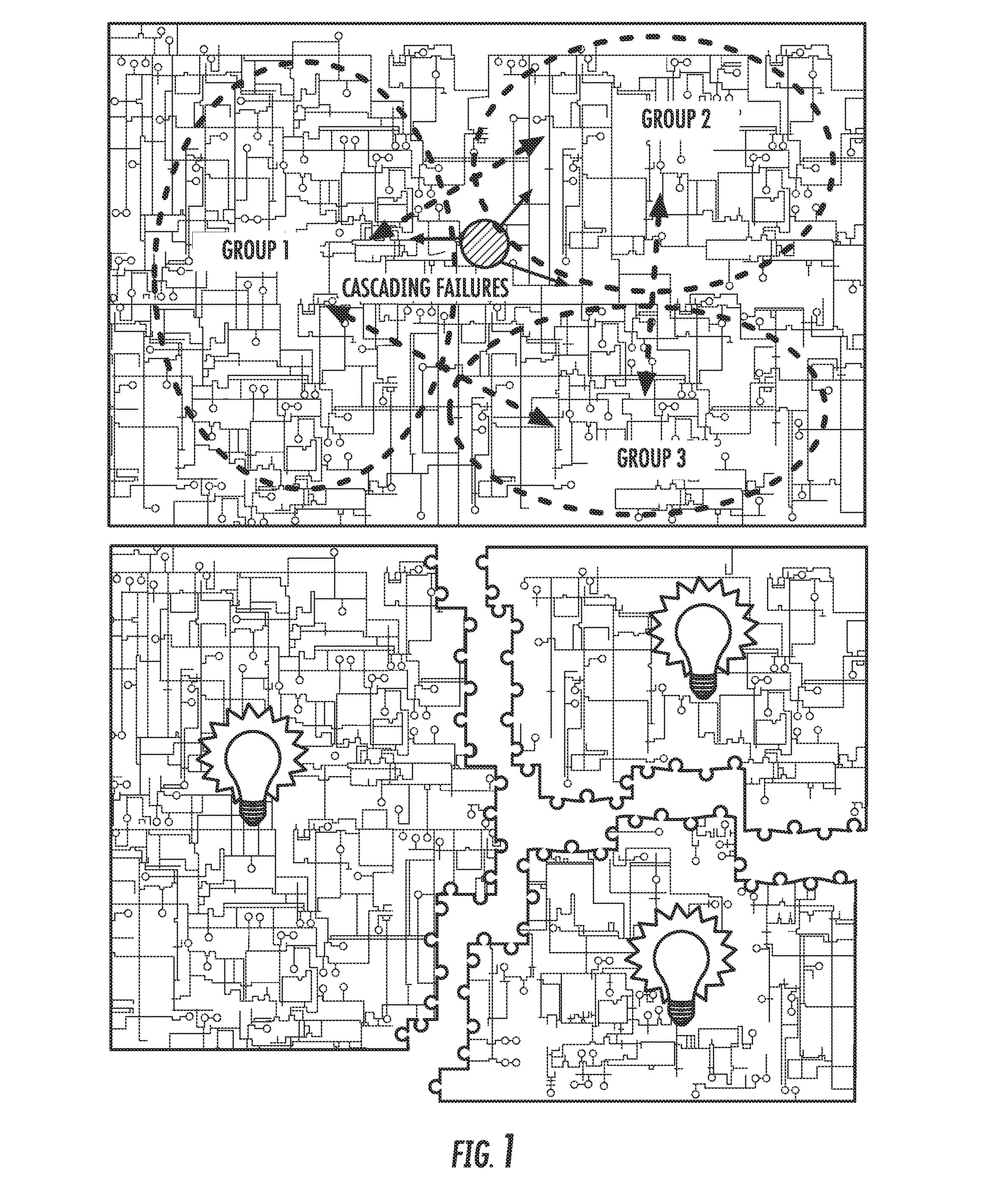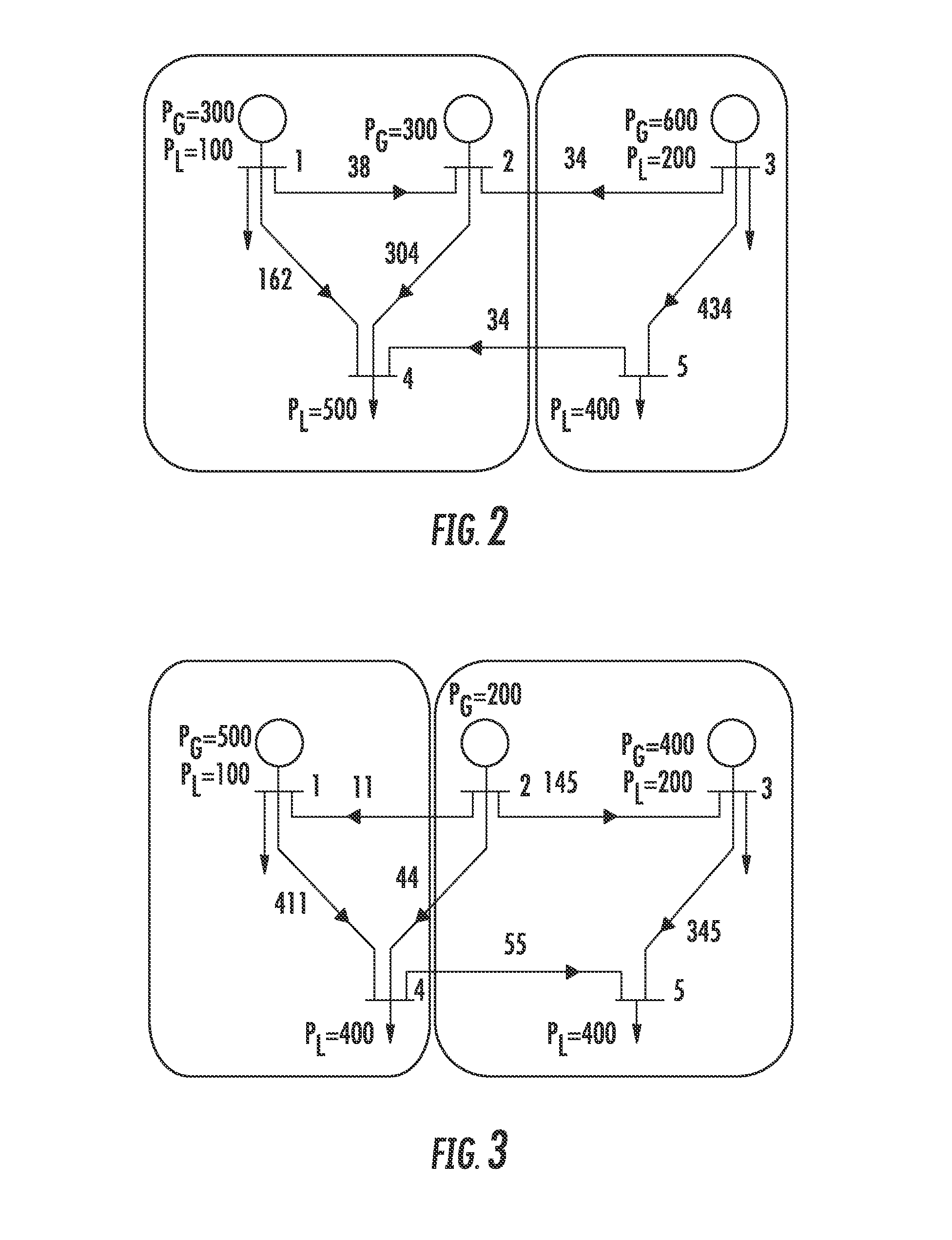Application of phasor measurement units (PMU) for controlled system separation
a technology of phasor measurement unit and controlled system, which is applied in the direction of process and machine control, instruments, electric devices, etc., can solve the problems of major blackout events, indirect costs up to billions of dollars, and propagation of failures into other infrastructures such as communication, water supply, natural gas and transportation systems,
- Summary
- Abstract
- Description
- Claims
- Application Information
AI Technical Summary
Benefits of technology
Problems solved by technology
Method used
Image
Examples
example
[0167]A 179-bus system, shown in FIG. 17, is a simplified model of a WECC AC transmission system. The system has 29 generators, 179 buses and 263 branches. The base case has a total generation of 61.4 GW and a total load of 60.8 GW.
[0168]To demonstrate the inventive controlled system separation scheme, a multi-contingency process continuously weakening the system until angle separation was used. The multi-contingency process contains 6 successive three-phase faults and line trips around the Malin interface (bus 83 in the 179-bus system), which was involved in the 1996 US Western Interconnection blackout. Table 2 gives these faults, which occur at the interval of 40 seconds and are respectively cleared after 6 cycles by tripping the fault lines. “#” indicates the locations of the three-phase faults. Note that these faults and line trips never break the connection at the Malin interface.
[0169]The locations of the six faults are also indicated by numbers in FIG. 18. The figure also hig...
PUM
 Login to View More
Login to View More Abstract
Description
Claims
Application Information
 Login to View More
Login to View More - R&D
- Intellectual Property
- Life Sciences
- Materials
- Tech Scout
- Unparalleled Data Quality
- Higher Quality Content
- 60% Fewer Hallucinations
Browse by: Latest US Patents, China's latest patents, Technical Efficacy Thesaurus, Application Domain, Technology Topic, Popular Technical Reports.
© 2025 PatSnap. All rights reserved.Legal|Privacy policy|Modern Slavery Act Transparency Statement|Sitemap|About US| Contact US: help@patsnap.com



